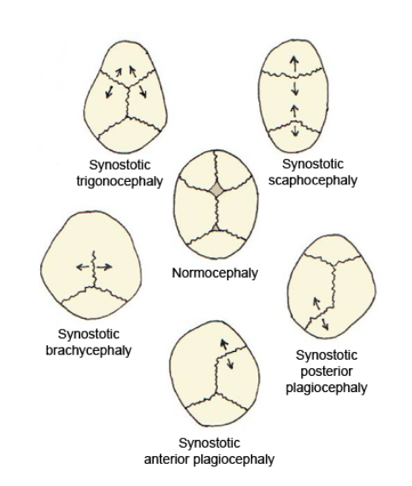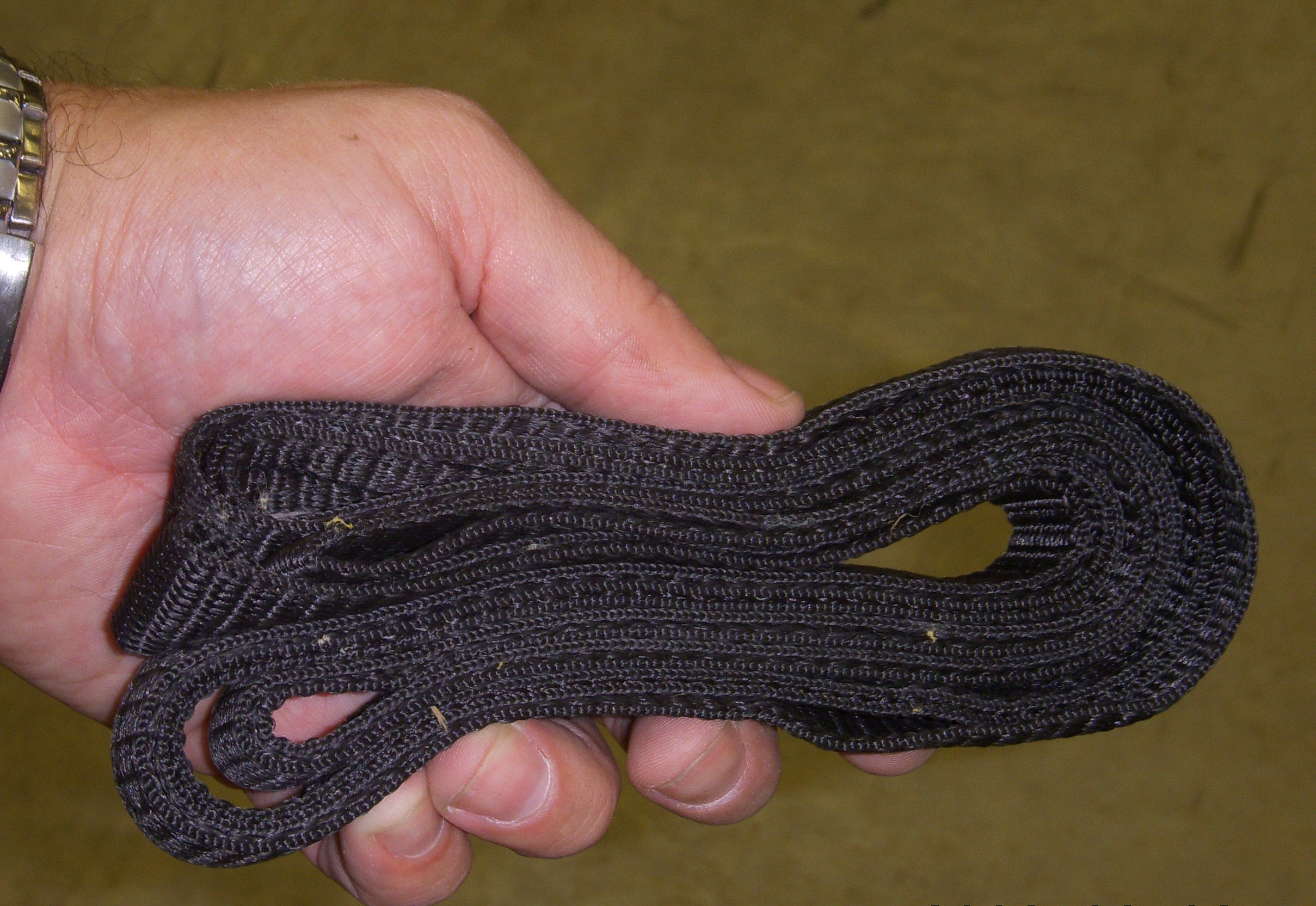|
Mothers Against Decapentaplegic Homolog 6
SMAD family member 6, also known as SMAD6, is a protein that in humans is encoded by the ''SMAD6'' gene. SMAD6 is a protein that, as its name describes, is a homolog of the Drosophila gene "mothers against decapentaplegic". It belongs to the SMAD family of proteins, which belong to the TGFβ superfamily of modulators. Like many other TGFβ family members SMAD6 is involved in cell signalling. It acts as a regulator of TGFβ family (such as bone morphogenetic proteins) activity by competing with SMAD4 and preventing the transcription of SMAD4's gene products. There are two known isoforms of this protein. Nomenclature The SMAD proteins are homologs of both the drosophila protein, mothers against decapentaplegic (MAD) and the ''C. elegans'' protein SMA. The name is a combination of the two. During ''Drosophila'' research, it was found that a mutation in the gene ''MAD'' in the mother repressed the gene ''decapentaplegic'' in the embryo. The phrase "Mothers against" was added as a ... [...More Info...] [...Related Items...] OR: [Wikipedia] [Google] [Baidu] |
Protein
Proteins are large biomolecules and macromolecules that comprise one or more long chains of amino acid residues. Proteins perform a vast array of functions within organisms, including catalysing metabolic reactions, DNA replication, responding to stimuli, providing structure to cells and organisms, and transporting molecules from one location to another. Proteins differ from one another primarily in their sequence of amino acids, which is dictated by the nucleotide sequence of their genes, and which usually results in protein folding into a specific 3D structure that determines its activity. A linear chain of amino acid residues is called a polypeptide. A protein contains at least one long polypeptide. Short polypeptides, containing less than 20–30 residues, are rarely considered to be proteins and are commonly called peptides. The individual amino acid residues are bonded together by peptide bonds and adjacent amino acid residues. The sequence of amino acid ... [...More Info...] [...Related Items...] OR: [Wikipedia] [Google] [Baidu] |
Craniosynostosis
Craniosynostosis is a condition in which one or more of the fibrous sutures in a young infant's skull prematurely fuses by turning into bone (ossification), thereby changing the growth pattern of the skull. Because the skull cannot expand perpendicular to the fused suture, it compensates by growing more in the direction parallel to the closed sutures. Sometimes the resulting growth pattern provides the necessary space for the growing brain, but results in an abnormal head shape and abnormal facial features. In cases in which the compensation does not effectively provide enough space for the growing brain, craniosynostosis results in increased intracranial pressure leading possibly to visual impairment, sleeping impairment, eating difficulties, or an impairment of mental development combined with a significant reduction in IQ. Craniosynostosis occurs in one in 2000 births. Craniosynostosis is part of a syndrome in 15% to 40% of affected patients, but it usually occurs as an iso ... [...More Info...] [...Related Items...] OR: [Wikipedia] [Google] [Baidu] |
Developmental Genes And Proteins
Development of the human body is the process of growth to maturity. The process begins with fertilization, where an egg released from the ovary of a female is penetrated by a sperm cell from a male. The resulting zygote develops through mitosis and cell differentiation, and the resulting embryo then implants in the uterus, where the embryo continues development through a fetal stage until birth. Further growth and development continues after birth, and includes both physical and psychological development, influenced by genetic, hormonal, environmental and other factors. This continues throughout life: through childhood and adolescence into adulthood. Before birth Development before birth, or prenatal development () is the process in which a zygote, and later an embryo and then a fetus develops during gestation. Prenatal development starts with fertilization and the formation of the zygote, the first stage in embryonic development which continues in fetal development until ... [...More Info...] [...Related Items...] OR: [Wikipedia] [Google] [Baidu] |
Transcription Factors
In molecular biology, a transcription factor (TF) (or sequence-specific DNA-binding factor) is a protein that controls the rate of transcription of genetic information from DNA to messenger RNA, by binding to a specific DNA sequence. The function of TFs is to regulate—turn on and off—genes in order to make sure that they are expressed in the desired cells at the right time and in the right amount throughout the life of the cell and the organism. Groups of TFs function in a coordinated fashion to direct cell division, cell growth, and cell death throughout life; cell migration and organization ( body plan) during embryonic development; and intermittently in response to signals from outside the cell, such as a hormone. There are up to 1600 TFs in the human genome. Transcription factors are members of the proteome as well as regulome. TFs work alone or with other proteins in a complex, by promoting (as an activator), or blocking (as a repressor) the recruitment of RNA ... [...More Info...] [...Related Items...] OR: [Wikipedia] [Google] [Baidu] |
STRAP
A strap, sometimes also called strop, is an elongated flap or ribbon, usually of leather or other flexible materials. Thin straps are used as part of clothing or baggage, or bedding such as a sleeping bag. See for example spaghetti strap, shoulder strap. A strap differs from a belt mainly in that a strap is usually integral to the item of clothing; either can be used in combination with buckles. Straps are also used as fasteners to attach, secure, carry, or bind items, to objects, animals (for example a saddle on a horse) and people (for example a watch on a wrist), or even to tie down people and animals, as on an apparatus for corporal punishment. Occasionally a strap is specified after what it binds or holds, e.g. chin strap. Webbing is a particular type of strap that is a strong fabric woven as a flat strip or tube that is also often used in place of rope. Modern webbing is typically made from exceptionally high-strength material and is used in automobile seat belts, ... [...More Info...] [...Related Items...] OR: [Wikipedia] [Google] [Baidu] |
PIAS4
E3 SUMO-protein ligase PIAS4 is one of several protein inhibitor of activated STAT (PIAS) proteins. It is also known as protein inhibitor of activated STAT protein gamma (PIASg or PIASy), and is an enzyme that in humans is encoded by the ''PIAS4'' gene. Interactions PIAS4 has been shown to interact with Mothers against decapentaplegic homolog 6 SMAD family member 6, also known as SMAD6, is a protein that in humans is encoded by the ''SMAD6'' gene. SMAD6 is a protein that, as its name describes, is a homolog of the Drosophila gene "mothers against decapentaplegic". It belongs to the SMA ..., Mothers against decapentaplegic homolog 7 and Lymphoid enhancer-binding factor 1. References Further reading * * * * * * * * * * * * * * * * * * * {{gene-19-stub ... [...More Info...] [...Related Items...] OR: [Wikipedia] [Google] [Baidu] |
Mothers Against Decapentaplegic Homolog 7
Mothers against decapentaplegic homolog 7 or SMAD7 is a protein that in humans is encoded by the ''SMAD7'' gene. SMAD7 is a protein that, as its name describes, is a homolog of the Drosophila gene: "Mothers against decapentaplegic". It belongs to the SMAD family of proteins, which belong to the TGFβ superfamily of ligands. Like many other TGFβ family members, SMAD7 is involved in cell signalling. It is a TGFβ type 1 receptor antagonist. It blocks TGFβ1 and activin associating with the receptor, blocking access to SMAD2. It is an inhibitory SMAD (I-SMAD) and is enhanced by SMURF2. Smad7 enhances muscle differentiation. Structure Smad proteins contain two conserved domains. The Mad Homology domain 1 (MH1 domain) is at the N-terminal and the Mad Homology domain 2 (MH2 domain) is at the C-terminal. Between them there is a linker region which is full of regulatory sites. The MH1 domain has DNA binding activity while the MH2 domain has transcriptional activity. The linker ... [...More Info...] [...Related Items...] OR: [Wikipedia] [Google] [Baidu] |
MAP3K7
Mitogen-activated protein kinase kinase kinase 7 (MAP3K7), also known as TAK1, is an enzyme that in humans is encoded by the ''MAP3K7'' gene. Structure TAK1 is an evolutionarily conserved kinase in the MAP3 K family and clusters with the tyrosine-like and sterile kinase families. The protein structure of TAK1 contains an N (residues 1–104)- and C (residues 111–303)-terminus connected through the hinge region (Met 104-Ser 111). The ATP binding pocket is located in the hinge region of the kinase. Additionally, TAK1 has a catalytic lysine (Lys63) in the active site. Crystal structure of TAK1-ATP have shown that ATP forms two hydrogen bonds with residues Ala 107 and Glu 105. Further hydrogen bonding is observed to Asp 175, which is the leading residue of the DFG motif. This residue is thought to interact with Lys 63 through polar interactions and is catalytically important for phosphate transfer to substrate molecules. Critical for the TAK1-TAB1 complex is a helical loop arou ... [...More Info...] [...Related Items...] OR: [Wikipedia] [Google] [Baidu] |
HOXC8
Homeobox protein Hox-C8 is a protein that in humans is encoded by the ''HOXC8'' gene. Function This gene belongs to the homeobox family of genes. The homeobox genes encode a highly conserved family of transcription factors that play an important role in morphogenesis in all multicellular organisms. Mammals possess four similar homeobox gene clusters, HOXA, HOXB, HOXC and HOXD, which are located on different chromosomes and consist of 9 to 11 genes arranged in tandem. This gene is one of several homeobox HOXC genes located in a cluster on chromosome 12. The product of this gene may play a role in the regulation of cartilage differentiation. It could also be involved in chondrodysplasias or other cartilage disorders. HOXC8 was found to have activity in promoting nerve growth and its expression is dysregulated in patients with neurofibromatosis type 1. See also * Homeobox Interactions HOXC8 has been shown to interact with Mothers against decapentaplegic homolog 6 and Mothe ... [...More Info...] [...Related Items...] OR: [Wikipedia] [Google] [Baidu] |
Mothers Against Drunk Driving
Mothers Against Drunk Driving (MADD) is a non-profit organization in the United States, Canada and Brazil that seeks to stop drunk driving, support those affected by drunk driving, prevent underage drinking, and strive for stricter impaired driving policy, whether that impairment is caused by alcohol or any other drug. The Irving, Texas–based organization was founded on September 5, 1980, in California by Candace Lightner after her 13-year-old daughter, Cari, was killed by a drunk driver. There is at least one MADD office in every state of the United States and at least one in each province of Canada. These offices offer victim services and many resources involving alcohol safety. MADD has claimed that drunk driving has been reduced by half since its founding. Positions According to MADD's website, "The mission of Mothers Against Drunk Driving is to end drunk driving, help fight drugged driving, support the victims of these violent crimes and prevent underage drinking." Genera ... [...More Info...] [...Related Items...] OR: [Wikipedia] [Google] [Baidu] |



